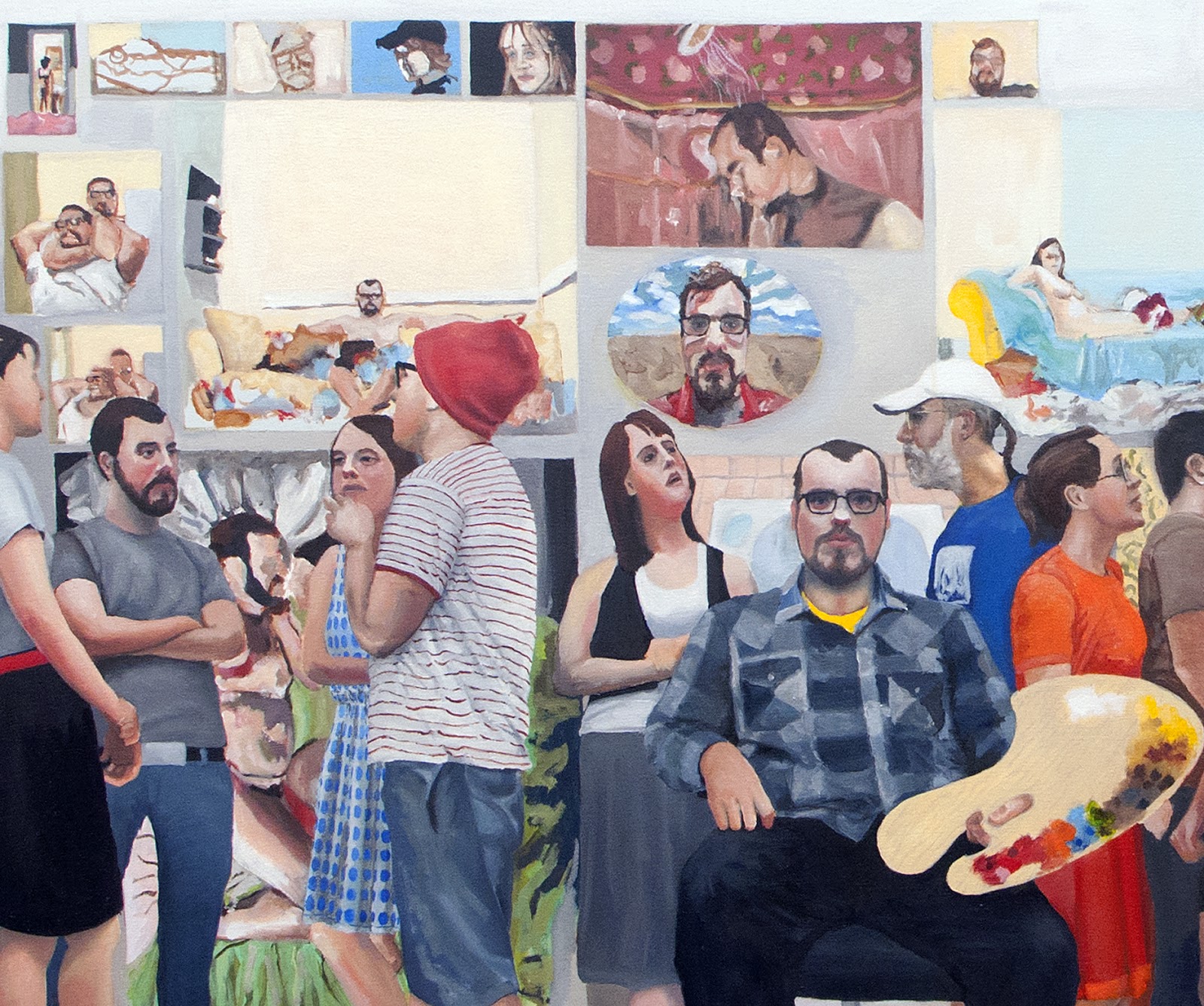Upon further review I noticed that I didn’t explain things
that I was thinking about or any of my goals in my previous post about this
work. I took this photograph for
this work shortly after finishing graduate school at Arizona State
University. Upon the completion of
the two works “the Hunger Artist” and “The Past has its Place” I had a vision
for how I would arrange my compositions and the manner in which the space would
interact with the figure. This was
the first painting I made after receiving my MFA in painting, so I wanted to
make a statement about my work and my experience, as well as a comment about
the artistic process in general.
I asked several of my friends and two of the teachers I
studied closely with to join me in my studio to be a part of a painting. It
took only a few moments to get the photographs that I needed to mix together to
create my painting. As you can see in the images below part of my process is to
map out the composition, using a grid system to help me determine the best aspect
ratio for the painting.
I use the photograph as a drawing reference mainly. After I establish my drawing I approach
the painting as an abstract picture plane, thinking about the interplay of
colors and values as I organize the rhythm of the marks.
Approaching the surface in this manner means thinking more
about artists like Cecily Brown than Gustave Courbet, which is to say, I am trying
reference Courbet, not copy him.
So if I think of the way Philip Guston’s early paintings were a
connected patchwork of abstract marks, then I can see the painting as it needs
to be seen, an interaction of colors and marks. The difference is that each mark I make has to work
representationally, formally and conceptually. When I look at Cecily Brown’s paintings, they look
remarkably similar to the organization of Seurat and Jaquin Sarolla y Bastida,
hers are simply less fussy about representation. To illustrate my point I’m including some paintings that may
help explain the way that I visualize the surface.
Philip Guston
Cecily Brown
Georges Seurat
Jaquin Sorolla y Bastida
The background contains many of the paintings that I made
while in graduate school at ASU (nearly my whole MFA thesis show is exhibited
behind the figures) as a way of staking my claim and throwing my hat into the
proverbial art ring. I am also
making a comment on the artistic process, the solitude of the painter, and how
that can mean shutting oneself away from friends and loved ones. It’s about how
there are conversations and interactions that the artist will miss in the
pursuit of the creative act. It’s
about being a part of a community of artists, but having to be apart from that
community to actively engage with the conversations held in that
community. It’s also about making
a mountain of work to finally understand what you kind of work you want to
make.
Below are some images of the Gustave Courbet's The Artist's Studio: A Real Allegory of Seven Years in My Artistic and Moral Life, the painting to which I was paying homage.
Below are some images of the Gustave Courbet's The Artist's Studio: A Real Allegory of Seven Years in My Artistic and Moral Life, the painting to which I was paying homage.
Below is the painting that Gustave Courbet was paying homage to, Las Meninas by Diego Valezquez. It was painted about 200 years prior.
Below are detail images of my painting as well as images of some of the paintings in the background, as well as a study for the finished work.
From Left to Right the artists featured in this painting are:
Jerry Schutte
Anne Schutte




















,_by_Velazquez.jpg)







